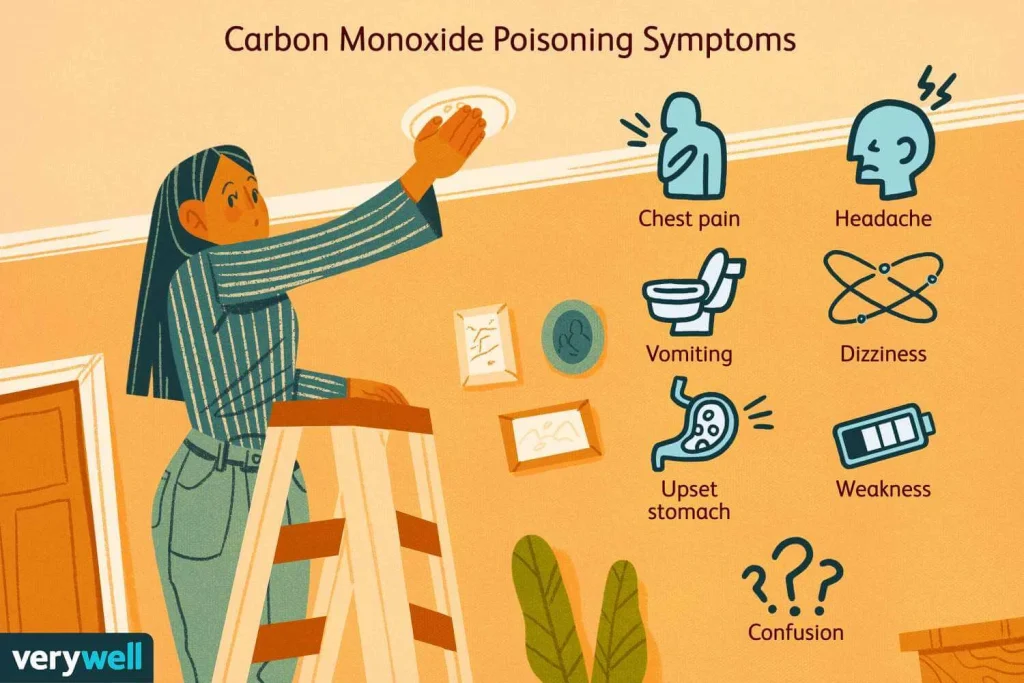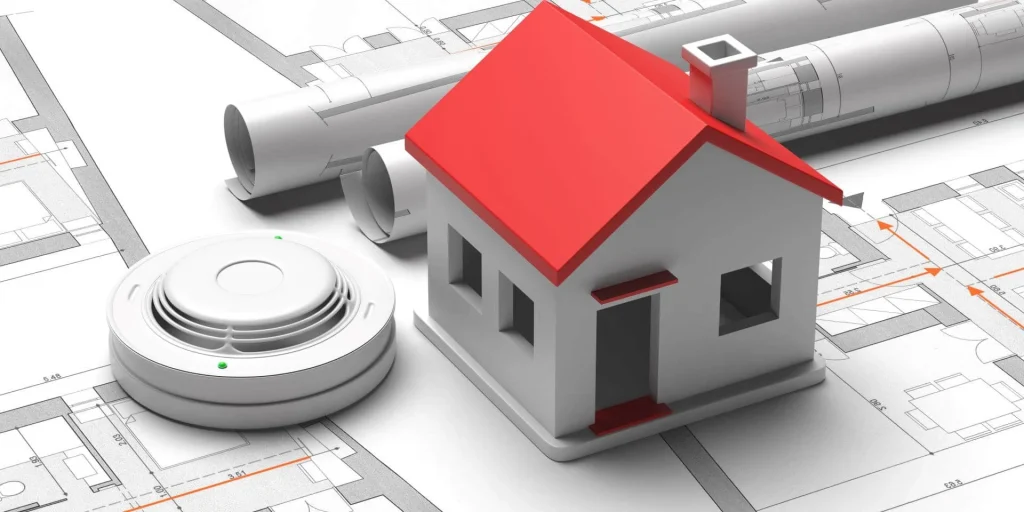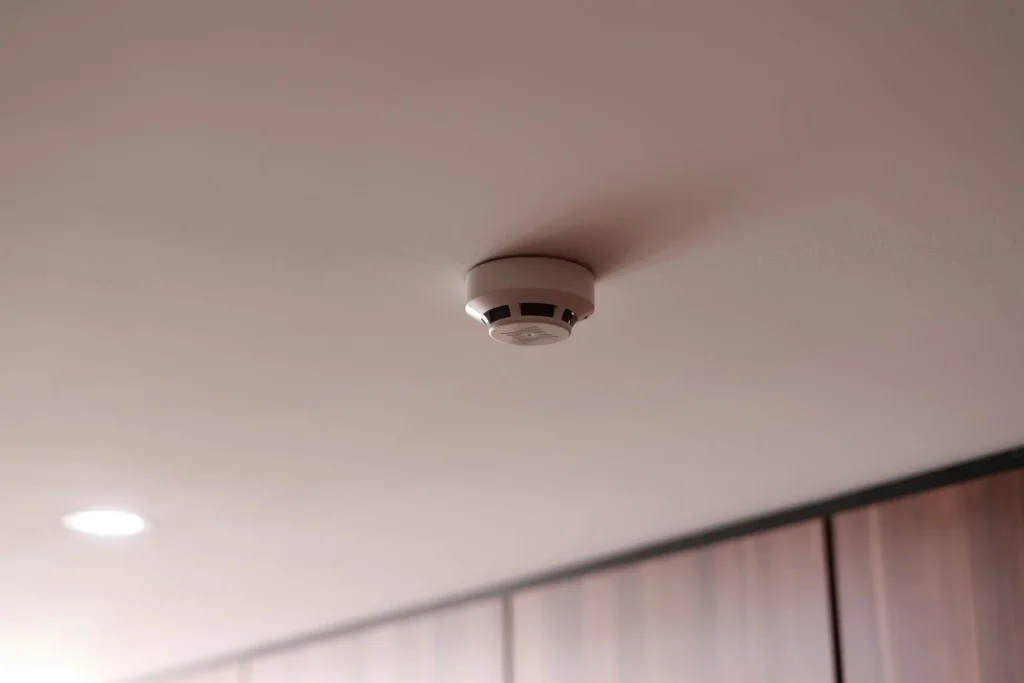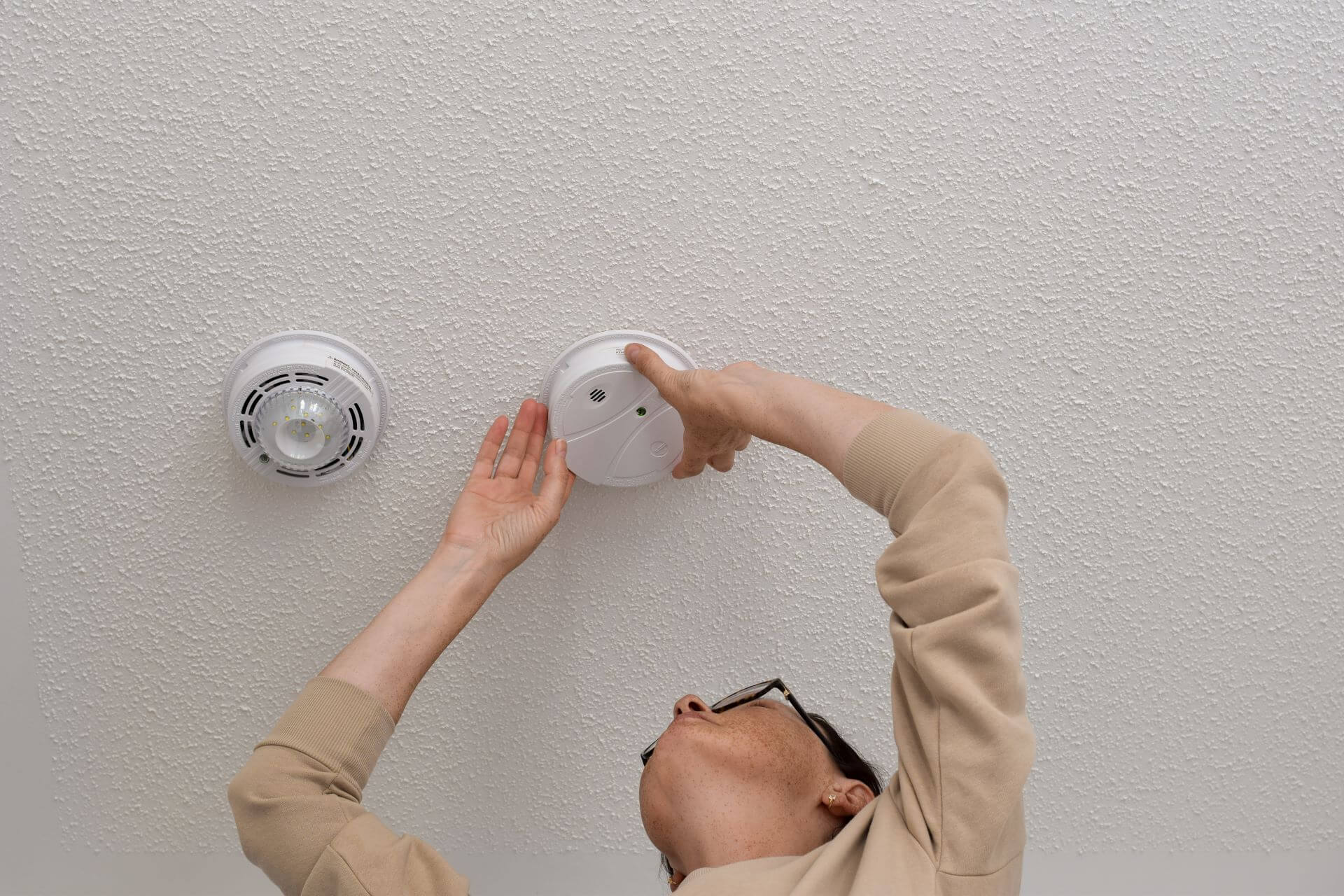A home carbon monoxide detector plays a crucial role in ensuring the safety of every household. If you still don’t have one, it’s important to know what it is and how it can save you or your family.
The safety of your home, such as your purchased house and lot for sale in Cavite, is just as important in ensuring the safety of those present.
Carbon monoxide is not detectible by sight, therefore, looking up carbon monoxide detector Philippines will provide extra protection and detect its early symptoms.
What Are Carbon Monoxide Detectors
Carbon Monoxide is a tasteless, odorless, and toxic gas through by-products of combustion. Appliances, fuel, or anything at home that can produce Carbon Monoxide (CO) gas is fatal and deadly once circulated.
CO is not detected by plain sight, therefore, a carbon monoxide detector at your home can detect the early presence of CO gas.

Photo from verywellhealth.com
Causes of carbon monoxide detector alarm
- Inadequate circulation or ventilation of air around your home.
- Running gas from automobiles in your home or garage.
- Charcoal grilling
- Appliances at home that are malfunctioning
- Generators used wrongly can cause CO buildup
- Unpredictable events through previously mentioned causes
Test the carbon monoxide detector
Most carbon monoxide detectors can be tested or vacuumed twice a year. A CO detector has a test button that can be pressed to sound a loud alarm.
If the CO alarm fails to function, have it repaired or replaced immediately. CO detection is important and can or has saved lives. It’s a matter that definitely should not be taken lightly.
Symptoms of Carbon Monoxide Poisoning
In the Philippines, an incident in Albay (2020) where 3 were killed because of CO poisoning from a generator.
Symptoms of CO poisoning are similar to the flu and food poisoning and there are different levels of it. The PPM or parts per million is the determining factor for carbon monoxide concentration symptoms.
These symptoms are:
- 50 PPM no adverse effects within 8 hours of exposure
- 200 PPM Mild headache, nausea, and dizziness between 1-2 hours.
- 400 PPM has similar symptoms but intensifies after 3 hours
- 800 PPM collapse after 1 hour
- 1,000PPM loss of consciousness after 1 hour
- 3,200 PPM dizziness and headaches after 5-10 minutes; unconscious after 30 minutes
- 6,400 PPM headache and dizziness after 1-2 minutes; unconscious and in danger of death within 10-15 minutes of exposure
- 12,800 PPM physiological effects, unconsciousness, and death after 1-3 minutes exposed.
Reasons You Should Have a Carbon Monoxide Detector at Your Home

Early detection
CO detectors or carbon monoxide detectors can easily detect traces of CO gas. Once it does, the alarm would set off and warn anyone in the household even those that are asleep.
Once CO gas increases, the CO detector would increase the alarm and notify everyone for immediate escape or evacuation.
Most appliances are CO sources
Appliances such as heaters, gas stoves, fuel-fired furnaces, and vehicles such as cars are common sources of CO gas.
Any other heat-producing appliance can be a source of CO gas once it malfunctions. Early detections can be provided through CO detectors.
Accurate alarm
Because of CO detectors’ electrochemical sensing, it is able to detect early signs of Carbon monoxide gas. Once it detects even small traces, the alarm would set off and alert everyone to prevent worse scenarios.
CO gas leak early detection
Carbon monoxide detectors are able to withstand environmental changes and humidity levels. Because of such a feature, it prevents false alarms and protects its internal components.
The alarm will sound to anyone
Symptoms of CO gas poisoning or exposure are similar to flu. Headaches, dizziness, and nausea, these symptoms if taken lightly, may already be CO poisoning, if untreated, would eventually lead to death, especially among those asleep.
Where to Put Carbon Monoxide Detectors in Your Home
Carbon monoxide gas can move easily around your home. So exposure is possible regardless as long as you are inside your home.
The best place to install your CO detectors is near fuel-burning or gas-burning appliances such as a garage, kitchen, or near the appliance itself.
So once the alarm sets off, open a nearby window, cut the appliance immediately, and relocate outside where fresh air is accessible.
Install CO detectors in sleeping areas as well to keep the place where you are asleep for 8 hours a day safe.

What to Do When the Detector Alarms
Remain calm during these situations as most alarms at this stage are not life-threatening. Before calling the emergency hotline, ask the people present for symptoms of dizziness or nausea, or anything “flu-like”.
If it alarms
If yes, call 911 as soon as possible. Evacuate the household to a safer location. If not, chances are prolonged exposure resulting in worsening of symptoms.
The best initial treatment against CO gas exposure would be fresh air. So relocate or evacuate the area immediately.
If it does not alarm
If symptoms are not yet detected, the chances of exposure to CO gas are not life-threatening. Instead, turn off your gas appliances or equipment, provide ventilation for the area, and reset your alarm.
Call for an inspector to check on your alarm and the area for confirmation. If anyone starts experiencing CO gas exposure symptoms, call 911 immediately.
And as mentioned above, move or relocate to a well-ventilated area to provide initial treatment for CO gas exposure.
What to Look For in a Carbon Monoxide Detector
Features to check when you buy your CO detector are the reliability of the company or product brand, unit price, battery replacement cost, digital readout, sensitivity, and the time it takes to reset and clear.
Another thing to consider with your CO detector is replacing it after 5 years. This is to ensure that your CO detector unit is updated.
AC-operated detectors vs. battery detectors
While both detect CO gas, both have different advantages. A Battery-operated unit is easy to install, move, and can operate during power shortages.
Plug-in detectors don’t rely on batteries and sensor replacement. However, there are also units that can be battery-operated at a much higher cost. Other detectors can be wired together so they can sound all together and provide more protection.
Do Not Ignore the Signals
Carbon monoxide may not be seen, but it’s a matter that should not be taken lightly. Make sure to check on your appliances often, especially those that are more than 5 or 10 years.
Checking your appliances’ wire or condition as a method of prevention. Another would be to know the emergency hotlines in your area to alert authorities of possible signs of CO gas.
As well, keep a smoke detector in the home. Carbon Monoxide and Smoke Detectors are made and are designed to save lives. Install them or at least one no matter what the price is.
Read more: Things You Should Have in Your House


